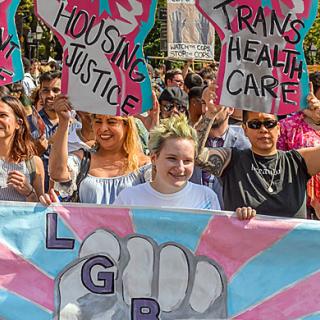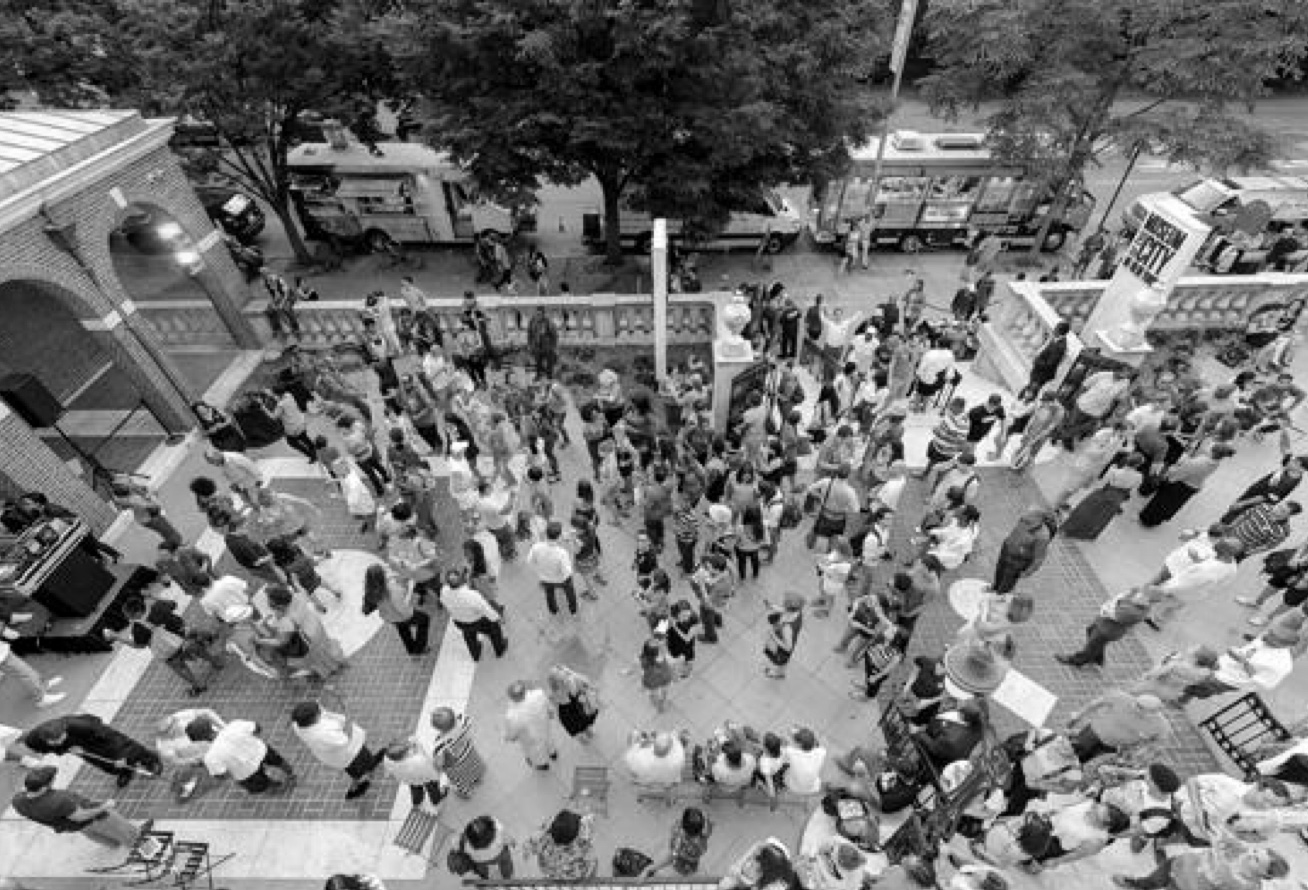When Existence is Resistance
Trans Activism in New York
1969-2019
Ongoing

Back to Exhibitions
In 1970 Sylvia L. Rivera and Marsha P. Johnson, two participants in the Stonewall uprising the year before, created Street Transvestite Action Revolutionaries (STAR) to empower marginalized youth and people of color before the term “transgender” was widely used.
The first group in the United States to organize explicitly around trans rights and self-determination, STAR emerged from the organizing after Stonewall. Rivera and Johnson sought to create family support structures for other trans youth of color through STAR House on East 2nd Street, the first shelter of its kind in the nation. STAR also called for radical change within the gay liberation movement and society at large.
Protesting discrimination and violence against their bodies, clothing, choice of sexual partners, and other markers of identity and expression, trans activists in STAR, the Queens Liberation Front, and other pioneering New York groups won their first victories in the form of state protections in the early 1970s. They also pushed for inclusion in the gay and women’s liberation movements.
Over the next two decades, trans activists continued to develop their own communities of support. In recent years, an intergenerational group of trans activists renewed a broader push for inclusive language, legal protections, and identity expression, confronting gender binaries and seeking safety, equality, and power. STAR folded in 1973, but its work helped shape trans organizing to this day.
Objects & Images
Mixed Crowd Outside The Stonewall Inn

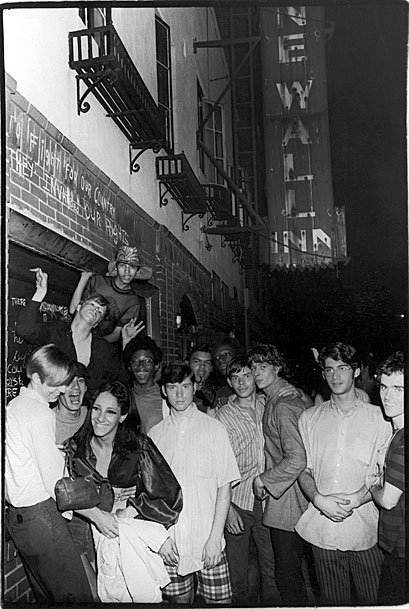
Mixed Crowd Outside The Stonewall Inn
Village Voice photographer Fred W. McDarrah took most of the known surviving photographs of the Stonewall uprising. The Village Voice, located on the same block as the Stonewall Inn, extensively covered the uprising. This photograph appeared on the newspaper’s front cover on July 3, 1969, with the headline, “Gay Power Comes to Sheridan Square.” The article mentions “queens—in full drag” thrown into a police van, but many accounts of the Stonewall uprising then and over time ignored the participation of people of color and trans New Yorkers.
Image Info: 1969, Fred W. McDarrah, Getty Images.
Flyer, “Street Transvestites Action Revolutionaries”
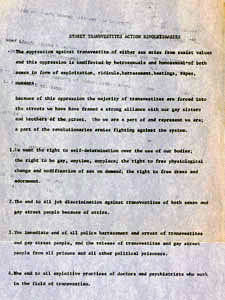
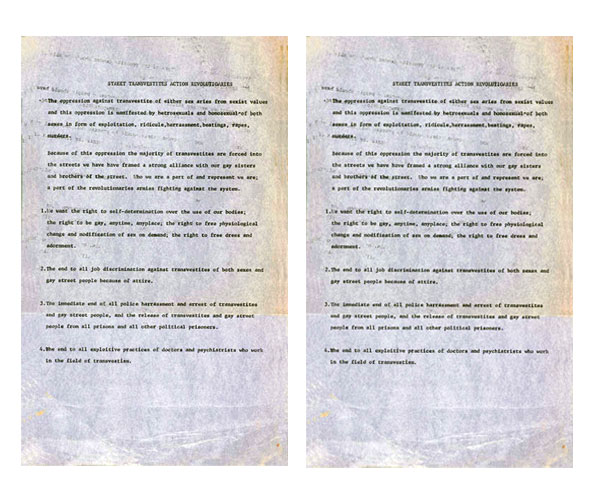
Flyer, “Street Transvestites Action Revolutionaries”
STAR called for an end to the oppression of transgender people—at the time most commonly referred to as transvestites. Influenced by other liberation movements and platforms such as the Black Panther Party and the Young Lords, the document details STAR’s mission to provide resources for marginalized trans youth and to call for more government services such as free education and health care instead of the criminalization of trans people.
Image Info: ca. 1970, Courtesy of the Manuscripts and Archives Division, The New York Public Library.
Christopher Street Liberation Day, 1973, Sylvia And Bebe Power Salute
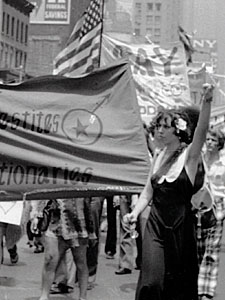

Christopher Street Liberation Day, 1973, Sylvia And Bebe Power Salute
Sylvia Rivera and fellow STAR member Bebe Scarpi hold aloft the group’s banner at the Christopher Street Liberation Day March—what would become known as the annual LGBTQ pride parade. During the rally that followed the march, Rivera spoke to the crowd about being excluded from the stage and from the lesbian and gay movement. It was a pivotal moment for Rivera and STAR, which soon disbanded.
Image Info: 1973, Richard C. Wandel, Courtesy LGBT Community Center Archive.
Drag
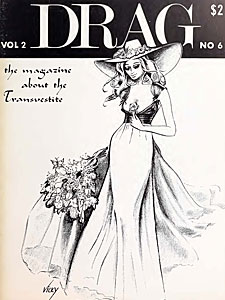
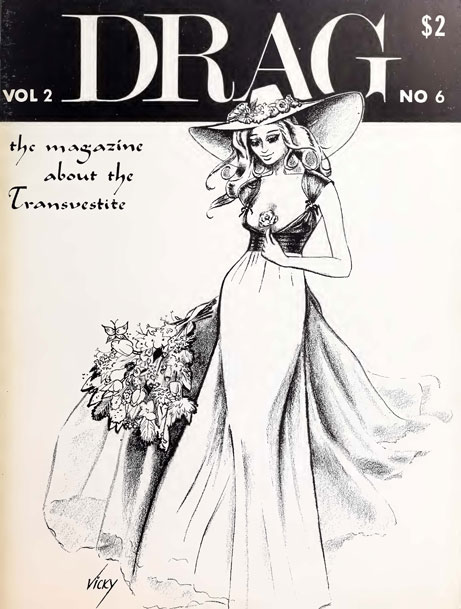
Drag
New Yorker Lee Brewster founded the Queens Liberation Front organization in 1969 and Drag magazine in 1971 to increase trans visibility and inclusion in the post-Stonewall gay liberation movement. Brewster also organized drag balls and sold clothing for this community at Lee’s Mardi Gras Boutique. Drag covered trans life and fought for the legal right of trans people to congregate and “dress as we see fit.” Both of these actions were criminalized in New York until Brewster and others successfully challenged local ordinances in the early 1970s; city laws against “impersonating a woman” were not fully overturned until 2011.
Image Info: Volume 2, No. 6, 1972.
Needlepoint Billboard Study
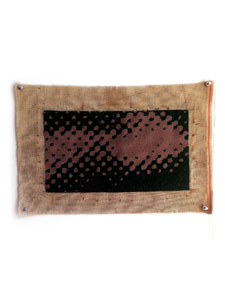
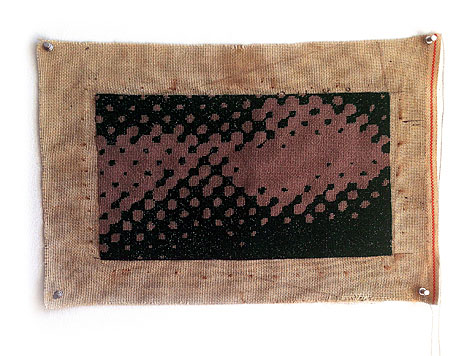
Needlepoint Billboard Study
This early work by artist and activist Avram Finkelstein explores identity through the historically gendered work of needlepoint. The piece depicts a fingerprint of a close friend of Finkelstein’s who later transitioned from their assigned sex at birth. Finkelstein was later part of the HIV/AIDS activist groups Silence=Death collective and ACT UP.
Image Info: Avram Finkelstein, 1973, wool, ecru canvas, Courtesy Avram Finkelstein archive.
Nyc Commission On Human Rights Postcard
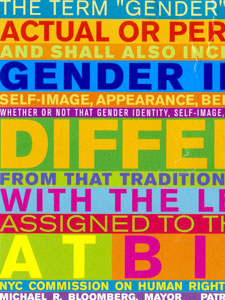
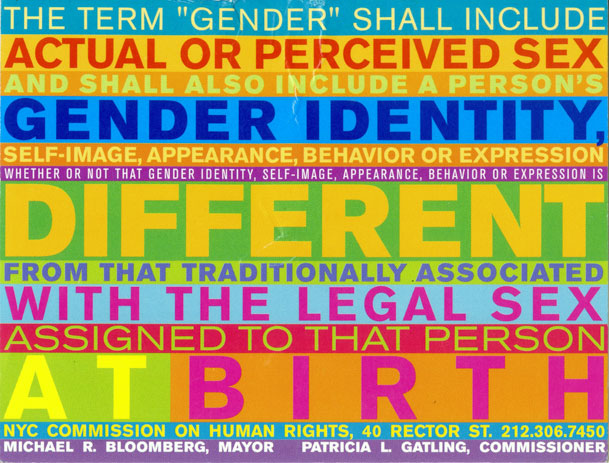
Nyc Commission On Human Rights Postcard
Beginning in 1971, New Yorkers waged a prolonged campaign to pass a citywide ordinance banning discrimination based on sexual orientation. The ordinance passed the City Council in 1986, but it did not offer protection for transgender people until 2002. In January 2019, after decades of efforts, the New York State Legislature passed the Gender Expression Non-Discrimination Act (GENDA), offering similar protections statewide.
Image Info: ca. 2002, Private collection.
All Gender Restroom Sign
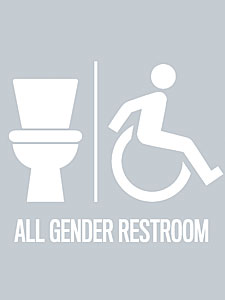
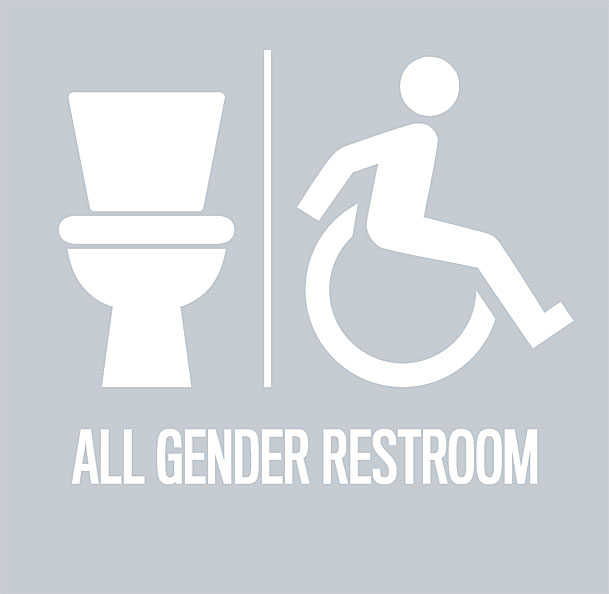
All Gender Restroom Sign
For trans people, using a public bathroom that fits their gender identity can result in harassment and violence. New York City Mayor Bill de Blasio launched a campaign in 2016 affirming New Yorkers’ rights to use the bathroom consistent with their gender identity or expression and mandated that city agencies and public schools provide single-occupancy restrooms. These signs are used at the Museum of the City of New York.
Image Info: 2016, Museum of the City of New York.
12th Annual Trans Day, Washington Square Park, New York
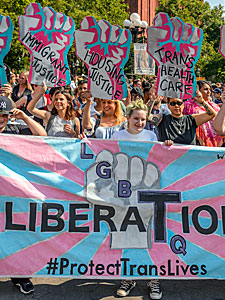
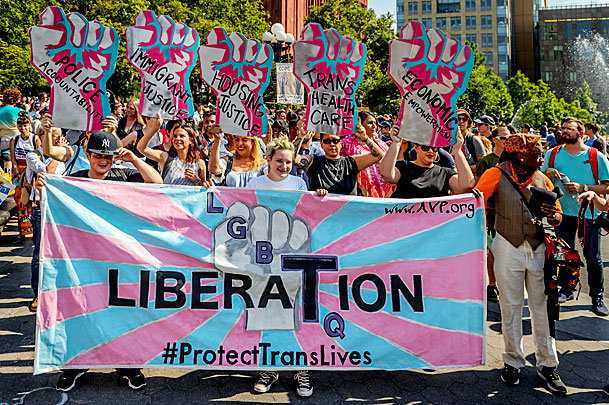
12th Annual Trans Day, Washington Square Park, New York
The Anti-Violence Project marches on the NYC Trans Day of Action for Social and Economic Justice, an annual June event beginning in 2004, organized by the Audre Lorde Project.
Image Info: June 24, 2016, Erik McGregor/Pacific Press/LightRocket via Getty Images.
Pronoun Pins
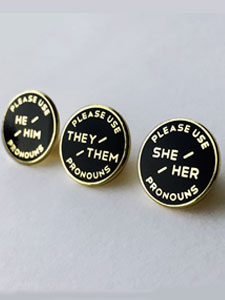
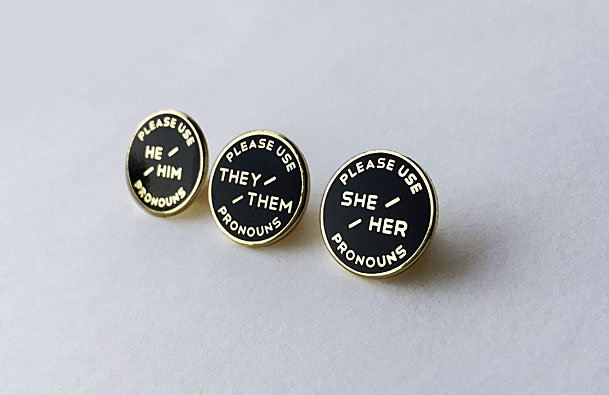
Pronoun Pins
Image Info: 2018, black enamel and gold-plated brass Courtesy Gamut Pins Trans activists have emphasized connections among gender identity, legal protections, and language.
Activists have mobilized to ensure that gender pronouns are not assumed, maintaining that how we speak to each other relates to how we treat each other, and that mis-gendering someone can cause harm.
Key Events
| Global | Year | Local |
|---|---|---|
| 1918 | New Yorker Jennie June publishes Autobiography of an Androgyne, the first book to chronicle the experiences of someone who might identify as transgender today | |
| 1967 | Lee Brewster organizes a drag ball for gay civil rights group Mattachine Society—events first held in the 1920s in Harlem | |
| 1969 | Stonewall uprising begins June 28th | |
| 1970 | Street Transvestite Action Revolutionaries (STAR) forms Christopher Street Gay Liberation Day March (what would become the LGBTQ pride parade) held in New York City | |
| 1973 | Sylvia Rivera ostracized at Gay Liberation Day rally in Washington Square Park; STAR disbands | |
| First Trans Day of Remembrance on November 20 to memorialize lives lost to anti-transgender violence | 1999 | |
| 2002 | Trans protections added to New York City human rights law for the first time | |
| 2019 | New York State legislature passes the Gender Expression Non-Discrimination Act (GENDA), offering protections to transgender New Yorkers statewide |
